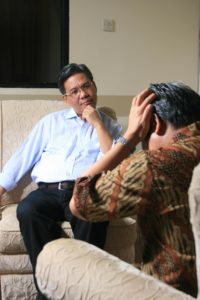Living with Chronic Pain from Reflex Sympathetic Dystrophy
There are many different chronic diseases out there that can have significant effects on the health of the afflicted individual. While it is important to think about the symptoms, diagnosis, and treatment of these diseases, it is just as vital to consider the many different negative impacts that this can have on the quality of life of the person and their family. Reflex Sympathetic Dystrophy (RSD), also known as Complex Regional Pain Syndrome (CRPS), is a debilitating disease of the nervous system that can lead to significant symptoms in one or more extremities. There are many different causes of this disease, such as:
- A traumatic injury, such as a bone fracture
- Complications of a major surgical procedure
- Inflammation following a severe illness
- An autoimmune disease that causes the body to attack itself
In some cases, the true cause of the disease may never be known. When someone has been diagnosed with Reflex Sympathetic Dystrophy (RSD), it can have a significant impact on their life and the lives of their loved ones. It is normal to feel like living with chronic pain from RSD is a significant burden; however, it is important to know that help is available and nobody has to face these challenges alone. What are some of the issues that a family living with RSD may have to face?
Living with RSD: Inability to Work
When someone has developed RSD, there are a variety of symptoms that they might experience. One of them is intense, shooting pain down one of the arms or into their hands. For people who use their hands for work, such as welders, carpenters, or even people who type on the computer, they may find it impossible to do their job. With the pain, joint stiffness, and swelling that often accompanies RSD, the inability to efficiently move the fingers and hands could make work an impossible task. Without this work, what is a family going to do? Will they lose the income from their career? How is a family going to eat?
Mobility Issues: Activities of Daily Living
If RSD shows up in one of the legs or feet, it can make it difficult to walk, let alone run. The activities that many people take for granted on a daily basis start to become an arduous journey; however, there can be intense pain that comes with moving the affected limb. Something as simple as walking to the mailbox to check the mail can seem impossible. The same can be said for mowing the lawn, cleaning the house, cooking meals, and doing the laundry. This can place a large burden on the rest of the family, making some people wonder how they are going to maintain the home.
Sleep Issues
One of the often overlooked issues related to RSD is the loss of sleep that comes with the pain. When people are up and about during the day, they are often focused on what they are doing. The pain can sometimes move to the back of someone’s mind if they are busy with a certain task. When people are lying in bed at night, not thinking about anything else, the pain becomes the only focus. Because of this, many people with RSD have difficulty sleeping. This loss of restful sleep can impact every area of someone’s life.
The Potential of Surgery
Reflex Sympathetic Dystrophy (RSD) is thought to be caused by over-activation of the sympathetic nervous system. When the nerves become irritated or inflamed, they start to send signals to the brain that cause the symptoms that people with RSD are familiar with. This can include intense pain, mobility issues, and joint stiffness. One of the treatment options that people may be offered is called a sympathetic nerve block. This can block the signals from the sympathetic nerves, helping to reduce the symptoms that cause lots of quality of life issues. If this doesn’t work, people may have to have surgery. This procedure is called a total sympathectomy and involves cutting the sympathetic nerves to blunt the signals entirely. Even though this is a drastic option, it has been shown to be effective for people with RSD. There are numerous risks that come with cutting these nerve endings, including loss of motor and sensory function. It is important for families to discuss this procedure with their surgeon before having surgery.
Long-Term Medical Care
Perhaps one of the biggest issues that families with RSD face is that of long-term medical care. Because of the chronic nature of the disease, many people with RSD require long-term medical care. One of the treatments that are often prescribed is pain medication. Because of the pain that comes with RSD, opioid medication is sometimes prescribed. There are many side effects of these pain medications, including:
- Hallucinations and delusions
- Respiratory depression
- Heart arrhythmias
- Dizziness or vertigo
- Nausea and vomiting
Perhaps one of the biggest side effects is addiction. Because of the addictive nature of these medications, people are often hesitant to take them. Those who do take them can develop a tolerance, where they need more of the medication to achieve the same effect. This can create significant problems for a family as people wonder if their loved one has become addicted to pain medication. Fortunately, there is help available.
Related Articles by Ed Smith
Contact an Experienced RSD Attorney in Sacramento
I’m Ed Smith, an RSD Attorney in Sacramento. If you or someone you care about has sustained developed Reflex Sympathetic Dystrophy, please call me at 916-382-0693. I would be happy to share friendly, free legal advice with your family.
Feel free to look at our sample results here.
Pixabay hosted the original photo at the start of this page. It has been shown here under the CC0 License.
:dr llo [cs 985]

